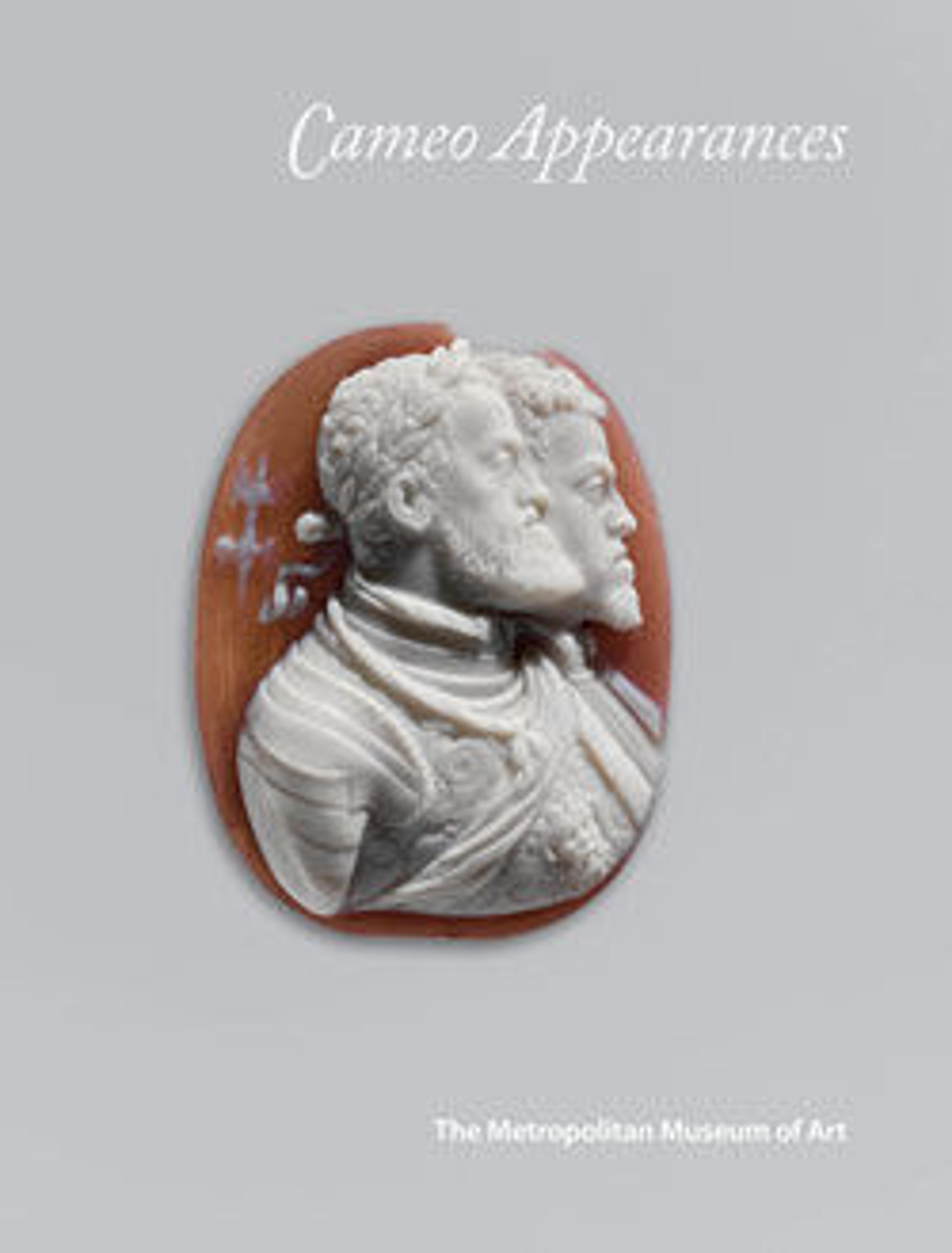Emperor Charles V (1500–1558) and his Son Philip II of Spain (1527–1598)
This is a rare, possibly unique instance of a Renaissance cameo documented in the carver’s own words. The eminent Hapsburg court sculptor Leone Leoni wrote in 1550 from Milan to Cardinal Granvella, agent of Charles V in Brussels, that “a fantastic stone” inspired him to carve a double portrait of Charles and his son, Philip II, “the way a sculptor used to do for Caesar and Augustus. On the reverse I represented the Empress so beloved of the Emperor.” Isabella of Portugal, wife of Charles and mother of Philip, had died in 1539. Leoni estimated that his work had taken two months. He was perpetually busy with important projects and his attention cannot have been undivided, yet as the precious letter corroborates, he obviously took great care with the cameo’s execution.
Jugate portraits, in which one profile overlaps another, were indeed invented by the ancient Romans. The object behind the heads here is a winged thunderbolt, borrowed from the imagery of Jupiter. The two men’s faces are livelier than Isabella’s; her likeness was modeled on a posthumous portrait, possibly painted by Titian.
The chip at the top, while unfortunate does not diminish this jewel’s power.
Jugate portraits, in which one profile overlaps another, were indeed invented by the ancient Romans. The object behind the heads here is a winged thunderbolt, borrowed from the imagery of Jupiter. The two men’s faces are livelier than Isabella’s; her likeness was modeled on a posthumous portrait, possibly painted by Titian.
The chip at the top, while unfortunate does not diminish this jewel’s power.
Artwork Details
- Title:Emperor Charles V (1500–1558) and his Son Philip II of Spain (1527–1598)
- Artist:Leone Leoni (Italian, Menaggio ca. 1509–1590 Milan)
- Date:1550
- Culture:Italian, Milan
- Medium:Sardonyx
- Dimensions:Overall, with frame: 1 5/16 x 1 1/16 x 3/8 in. (3.4 x 2.6 x 1 cm);
Visible cameo (confirmed): 33.8 x 26.2 x 9.8 mm - Classification:Lapidary Work-Gems
- Credit Line:The Milton Weil Collection, 1938
- Object Number:38.150.9
- Curatorial Department: European Sculpture and Decorative Arts
More Artwork
Research Resources
The Met provides unparalleled resources for research and welcomes an international community of students and scholars. The Met's Open Access API is where creators and researchers can connect to the The Met collection. Open Access data and public domain images are available for unrestricted commercial and noncommercial use without permission or fee.
To request images under copyright and other restrictions, please use this Image Request form.
Feedback
We continue to research and examine historical and cultural context for objects in The Met collection. If you have comments or questions about this object record, please contact us using the form below. The Museum looks forward to receiving your comments.
